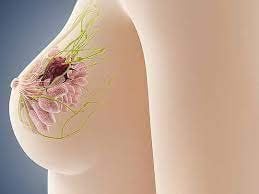Benign breast tumors are common lesions, so many people wonder if benign breast tumors are dangerous. Currently, there are many methods for monitoring and managing them, such as open surgery to remove the tumor or aspiration of the tumor using biopsy needles with vacuum assistance under ultrasound guidance (VABB).
1. Q&A about the surgery to remove benign breast tumors
Whether benign breast tumors are dangerous or if benign breast tumors should be surgically removed is a concern for many people. To understand more, you can refer to the Q&A section below:
1.1. When should you monitor the tumor every 6 months for 2 years?
When the breast tumor is small, does not cause pain or discomfort, you are near reputable medical facilities with deep expertise in breast examination, and you have time to attend appointments as scheduled by your doctor.
1.2. When should you choose the VABB method to remove your benign tumor?
When the tumor is large, causing pain, discomfort, and affecting aesthetics, when you are preparing to become pregnant and give birth. When you cannot monitor it for a long time.
1.3. When should you opt for open surgery to remove the tumor?
When your benign breast tumor is indicated for removal but is not near a medical facility capable of using VABB for removal. Additionally, when the tumor is too large and has significant vascular proliferation, you should also consider open surgery.
2. What are the advantages of the VABB method for tumor removal?
The advantages of the VABB method for tumor removal are as follows:
- It can remove both palpable and non-palpable tumors while minimizing damage to healthy breast tissue.
- Safety: minimal blood loss, no pain.
- No need for hospitalization.
- The skin incision is small (≤ 5mm), no stitches are required, easy care, and the scar after the procedure is very small (≤ 5mm), ensuring aesthetics.
3. Does the vacuum-assisted biopsy technique cause pain? Is anesthesia or local anesthesia needed?
When performing the removal of benign breast tumors using VABB, you do not need general anesthesia; only local anesthesia with a mixture of anesthetic and vasoconstrictor is required to enhance the effect of the anesthetic and reduce the risk of bleeding complications.
4. What should patients prepare before the procedure?
Patients will be thoroughly explained about the steps involved, assessed for their health status, and undergo coagulation tests to prevent bleeding complications.
Additionally, patients should clean the breast area and body thoroughly the day before, and wear light and comfortable clothing for easy changing during the procedure.
5. How is the technique performed?
Under ultrasound guidance, the biopsy needle will be inserted behind the tumor at the 6 o’clock position. After confirming the needle’s position, the guide tube’s placement, and the machine’s proper functioning, the cutting and suction of the tumor will begin. The entire process of cutting and suctioning the benign breast tumor with the needle will be observed by the doctor in real-time under ultrasound to ensure the tumor is completely removed and no complications occur.
6. Complications of ultrasound-guided fine needle aspiration biopsy
In general, the procedure is relatively safe, and a few mild complications such as hematoma at the biopsy site may occur. However, these can be managed on-site with compression bandages or aspiration, and it is very rare for further intervention to be necessary.
Additionally, infection at the biopsy site may occur. Currently, at Vinmec International General Hospital, strict adherence to infection control procedures helps to minimize this complication.
7. Is hospitalization necessary for monitoring after the procedure?
After the procedure, patients will be monitored for about 30 minutes to 1 hour before returning home to their normal activities. Accordingly, patients need to keep the compression bandage on for 24 hours, keep the incision dry, change the bandage daily, and the incision will heal quickly.
Patients may feel slight swelling and pain at the procedure site; in this case, they can simply use common pain relief medications. Additionally, bruising may appear on the skin around the fine needle aspiration biopsy site, which will then turn yellow and resolve on its own after a short period.
To ensure confidence in the quality of the biopsy technique and the treatment of benign breast lesions with vacuum assistance, you should choose to perform this technique at reputable facilities with highly qualified medical staff, strict surgical protocols, and fully equipped facilities to support the diagnosis and treatment of breast conditions effectively.

